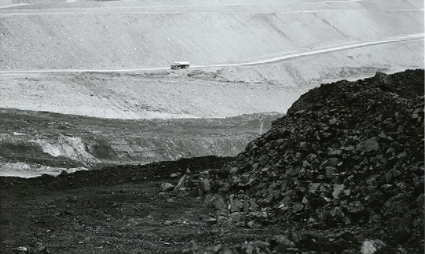Natural Resources - Definition, Examples, Types of Natural Resources, FAQs
A natural resource is everything in the environment that can be utilized.
What is resources and Examples of Resources.
Resources Definition: The term "resource" refers to all of the items in our environment that assist us meet our needs and desires. Resources are divided based on their availability into two categories: renewable and non-renewable resources.
NEET 2025: Mock Test Series | Syllabus | High Scoring Topics | PYQs
JEE Main: Study Materials | High Scoring Topics | Preparation Guide
JEE Main: Syllabus | Sample Papers | Mock Tests | PYQs
- What are Natural Resource?
- Classification of Natural Resources:
- Classification on the basis of abundance and availability
- Natural Resources Examples:
- Management of Natural resources and Importance of Natural Resources:
- Extraction of Natural Resources:
What are Natural Resource?
Natural Resources Definition: Natural resources meaning is the entire natural environment that supports human life and contributes to the production of basic necessities and luxuries. As a result, natural resources make up the atmosphere, hydrosphere, and lithosphere. The environment is composed of natural resources. Many natural resources are necessary for human survival, while others are exploited to fulfil human desires. Conservation is the long-term management of natural resources with the purpose of ensuring their long-term viability. Natural resources can be categorised in a variety of ways.

Also read -
- NCERT Solutions for Class 11 Chemistry
- NCERT Solutions for Class 12 Chemistry
- NCERT Solutions for All Subjects
Classification of Natural Resources:
Classification based on origin:
Biotic – Biotic assets are materials that can be derived from the biosphere (living and organic material), such as woods and animals. Because they are made up of decomposed organic materials, fossil fuels like coal and petroleum fall under this group.

Abiotic — Quasi, non-organic materials are referred to as abiotic resources. Soil, clean water, air, rare-earth elements, and toxic chemicals, like gold, iron, copper, silver, and other ores, are examples of abiotic resources.

Also Read:
- NCERT Solutions for Class 11 Chemistry Chapter 14 Environmental Chemistry
- NCERT Exemplar Class 11 Chemistry Solutions Chapter 14 Environmental Chemistry
- NCERT notes Class 11 Chemistry Chapter 14 Environmental Chemistry
Classification based on the stage of development:
Potential resources — Potential resources are those that may be exploited in the future, such as petroleum in sedimentary rocks that is a potential resource until it is dug out and utilised.
Actual resources – Those who have been surveyed, evaluated, and verified and are actively being used in development, such as wood processing, and are often technology-dependent.
Reserve resources are the portion of an actual resource that can be profitably produced in the future.
Stock resources are those that have been examined but cannot be utilised due to technological limitations—for example, hydrogen.
Classification based on recovery rate:
- Renewable resources meaning-Resources that can be replenished naturally are known as renewable resources definition. Some of these resources, such as sunlight, air, wind, and water, are always present and their quantities are unaffected by human consumption.
Although many renewable resources do not regenerate as quickly as others, they are nonetheless vulnerable to overuse and depletion. So long as the rate of replenishment/recovery exceeds the rate of consumption, resources are regarded as renewable in terms of human usage. When compared to non-renewable resources, they are more easier to restore.

Non- renewable resources- Non-renewable materials either take a long time to develop or do not form naturally in the environment. The most common resource featured in this category is minerals. When the pace of consumption exceeds the rate of replenishment/recovery, resources are considered non-renewable from a human perspective; fossil fuels, for example, fall into this category because their rate of production is exceedingly slow. Some resources, such as radioactive elements like uranium, which naturally decay into heavy metals, naturally diminish in quantity without human intervention. Metallic minerals can be re-used through recycling, whereas coal and petroleum cannot. They require millions of years to refill once they've been used out.

Related Topics Link, |
Classification on the basis of abundance and availability
Inexhaustible resources: There are lots of these and they cannot be depleted by human consumption. For instance, air, sand, clay, and so on. The overpopulation of humanity has an impact on it.
Exhaustible resourecs: These are restricted and can be depleted over time, such as coal and petroleum.
Natural Resources Examples:
Biotic resources- flora-fauna, microbes.
Abiotic resources- coal, light , sand.
Renewable resources – sunlight , air.
Non renewable resources- fossil fuels.
Potential resourcs- petroleum
Actual resources- woods.
Reserve resources- water.
Stock resources- hydrogen
Inexhaustible resources- air, sand and clay.
Exhaustible resources- coal and petroleum.
Management of Natural resources and Importance of Natural Resources:
Management of natural resources refers to a system for regulating the use of natural resources in order to reduce waste and make the most efficient use of them. Natural resource management is the science of managing natural resources such as land, water, soil, plants, and animals, with a focus on how management affects current and future generations' quality of life.
As a result, sustainable development is guided by the prudent use of resources to meet the needs of both current and future generations. Natural resource management entails determining who has the right to utilise the resources and who does not, as well as defining the resource's boundaries. Users may manage resources according to rules governing when and how the resource is used based on local conditions or a governmental body or other central authority may manage resources.
Sustainable development is defined as the prudent use of natural resources to meet present fundamental human requirements while also protecting resources for future generations. Sustainable forest management entails intelligent management of forest resources in order to ensure that they are available for future generations
The following are requirements for sustainable natural resource management:
Because resources are finite, they must be used cautiously.
A long-term view is required to ensure that these resources will last for future generations rather than being exploited for short-term advantage.
Equitable resource allocation so that everyone benefits from the development of these technologies, not just a few wealthy and powerful people.
Examining the environmental damage caused by the extraction or use of these resources,
Planning for the safe disposal of trash generated during the extraction or use of natural resources.
Extraction of Natural Resources:
Any operation that takes resources from nature is referred to as resource extraction. This can range in scale from preindustrial societies' customary use to global industry. Extractive industries, along with agriculture, form the foundation of the economy's primary sector. Raw material is produced via extraction, which is subsequently treated to add value. Hunting, trapping, and mining are examples of extractive industries.
Natural resources can significantly increase a country's wealth; however, a sudden inflow of money brought on by a resource boom can cause social problems such as inflation, which harms other industries ("Dutch disease"), and corruption, which leads to inequality and underdevelopment (the "resource curse").
Also check-
- NCERT Exemplar Class 11th Chemistry Solutions
- NCERT Exemplar Class 12th Chemistry Solutions
- NCERT Exemplar Solutions for All Subjects
NCERT Chemistry Notes:
Frequently Asked Questions (FAQs)
The term "resource" refers to all of the items in our environment that assist us meet our needs and desires. Resources are divided based on their availability into two categories: renewable and non-renewable resources.
Natural resources refer to the entire natural environment that supports human life and contributes to the production of basic necessities and luxuries. As a result, natural resources make up the atmosphere, hydrosphere, and lithosphere.
Renewable resources-Resources that can be replenished naturally are known as renewable resources. Some of these resources, such as sunlight, air, wind, and water, are always present and their quantities are unaffected by human consumption
Abiotic — Quasi, non-organic materials are referred to as abiotic resources. Soil, clean water, air, rare-earth elements, and toxic chemicals, like gold, iron, copper, silver, and other ores, are examples of abiotic resources.
Biotic – Biotic assets are materials that can be derived from the biosphere (living and organic material), such as woods and animals. Because they are made up of decomposed organic materials, fossil fuels like coal and petroleum fall under this group.
Biotic resources- flora-fauna, microbes.
Abiotic resources- coal, light , sand.
Renewable resources – sunlight , air.
Non renewable resources- fossil fuels.
Also Read
11 Mar'25 09:55 AM
09 Dec'24 11:41 AM
20 Oct'24 04:53 PM
20 Oct'24 11:38 AM
20 Oct'24 11:34 AM
20 Oct'24 11:13 AM
19 Oct'24 11:02 AM
30 Sep'24 08:56 AM
30 Sep'24 08:55 AM